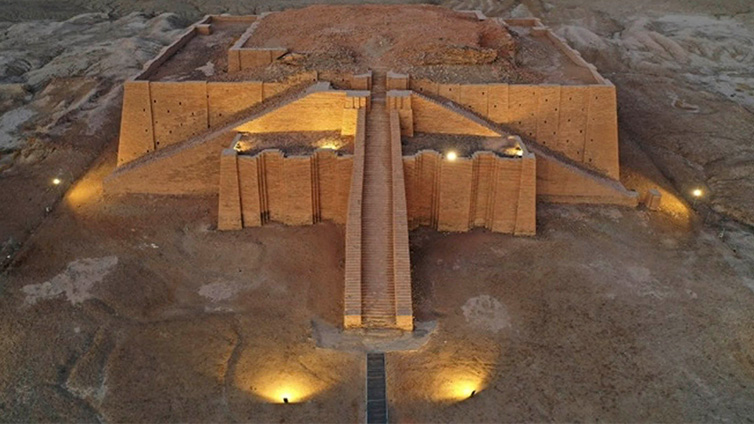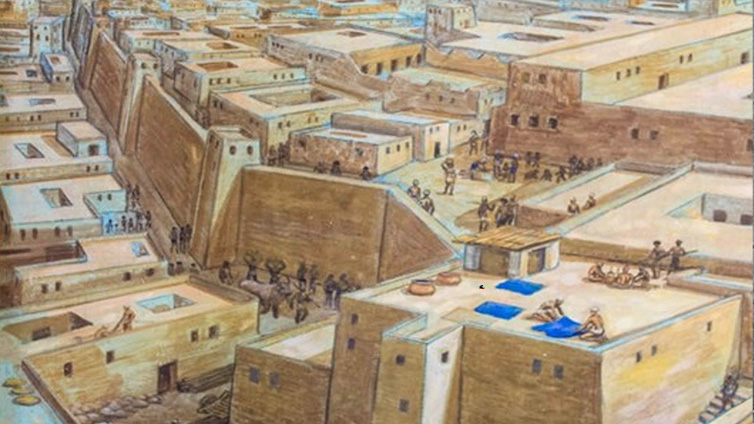Complex Societies Appear
Teacher Resources
Driving Question: How did farming lead to the development of complex societies?
The invention of farming led to surpluses of food and increasing populations. People began to settle down and develop large societies. These societies needed people to do other jobs and rulers to enforce laws, which led to the creation of the first agrarian societies.
Learning Objectives:
- Describe the formation and features of early complex societies.
- Compare and contrast early complex societies.
Vocab Terms:
- agrarian
- culture
- hierarchy
- society
- surplus
- trade
Opener: Complex Societies Appear
To teach this lesson step, refer to page 2 of the Lesson 5.3 Teaching Guide.
The invention of farming started a revolution, but how did it lead to even greater complexity?
Formation of States
To teach this lesson step, refer to page 2 of the Lesson 5.3 Teaching Guide.
The “Urbanization from the Bottom-Up” blog looks at the challenges of the growth of cities.
The first year in human history in which more people lived in cities than rural areas was 2008. But to understand why this change happened, we have to go all the way back to the beginning!
Where Did the First Cities and States Appear?
The First States
To teach this lesson step, refer to page 3 of the Lesson 5.3 Teaching Guide.
Teachers in our online teacher community share their approach to helping students piece together the best parts of societies into one Frankenstein civilization—check it out!
The following materials explore some of the earliest agrarian states. Your job is to choose the best features of each state to create a monster civilization.
-
Guiding Questions
-
Before you read
Preview the questions below, and then skim the article. Be sure to look at the section headings and any images.
While you read
Look for answers to these questions:
- How did geography and the environment shape the development of Mesopotamian societies?
- How did the environment shape the political structure of Mesopotamia?
- What were the cultural characteristics of Mesopotamian society?
- How was Mesopotamian society organized?
- What led to the decline and transformation of Mesopotamia?
After you read
Respond to this question: What are some other societies of the past or present that are shaped by their environments?
-
Guiding Questions
-
Before you watch
Preview the questions below, and then review the transcript.
While you watch
Look for answers to these questions:
- How did geography and the environment shape the development of Egyptian societies?
- How did the Nile River help Egyptian societies?
- What was the political and social structure of Egyptian society?
- Why did other societies want to control Egypt?
After you watch
Respond to this question: Why do you think people continue to be fascinated by ancient Egypt?
Key Ideas
-
Guiding Questions
-
Before you read
Preview the questions below, and then skim the article. Be sure to look at the section headings and any images.
While you read
Look for answers to these questions:
- How did geography and the environment shape the Indus River Valley societies?
- What was the political structure of the Indus River Valley?
- What were the cultural characteristics of the societies in the Indus River Valley?
- How was society organized in the Indus River Valley?
- What led to the decline and transformation of Indus River Valley?
After you read
Respond to this question: What do you think happened to the societies of the Indus River Valley?
Closer: Complex Societies Appear
To teach this lesson step, refer to page 7 of the Lesson 5.3 Teaching Guide.
This contribution in our online teacher community is an interesting look at the rise and fall of empires.
Just as cities and states appear, they also sometimes fall. Take a closer look at how some of their stories end.
Causes of Collapse
Why did some societies collapse? Listen in as David Christian and Peter Bellwood discuss some of these collapses and the questions we continue to ask about them.
Key Ideas
-
Guiding Questions
-
Before you listen
Preview the questions below, and then review the transcript.
While you listen
Look for answers to these questions:
- What does Peter Bellwood think is one of the biggest mysteries about early complex societies?
- What are two examples Peter Bellwood gives that illustrate these mysteries?
- How do we know that the Maya didn’t all die when their society collapsed?
After you listen
Respond to this question: Can you think of other societies that have been impacted, either positively or negatively, by environmental change?



















